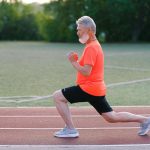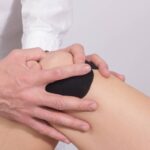Recovering balance and stability is often a critical aspect of stroke rehabilitation efforts. A stroke can disrupt the motor and coordination abilities of patients, making tasks like walking or simply standing upright a challenge. Balance exercises are specially designed activities that can assist individuals in regaining their postural stability and improving their gait. These exercises target the core and leg muscles, which are essential for maintaining balance, and can also enhance muscle strength and coordination.
Rehabilitation programs frequently include balance exercises as they have been shown to be effective in restoring functional independence. These exercises typically start with simple movements, such as standing with a wide base of support, and gradually progress to more complex tasks that challenge the patient’s balance more intensely. By practicing these exercises consistently, stroke patients can work towards overcoming the balance issues that often accompany a stroke, leading to improved mobility and a better quality of life.
It is important for stroke survivors to engage in exercise regimens that are tailored to their specific needs and abilities. Supervision from healthcare professionals can ensure that the exercises are done safely and effectively. As patients progress, the level of difficulty of the exercises may increase to continue challenging their balance and to advance their recovery.
Understanding Stroke and Its Impact on Balance
Stroke often leads to impairments in balance and postural control, which are critical for performing daily activities safely.
Effects of Stroke on Postural Control
A stroke can significantly compromise postural control, the ability to maintain the body’s center of mass over its base of support. Key elements impacted include limits of stability, which refer to the distance one can lean in any direction without losing balance. After a stroke, these limits may become severely reduced. They often experience difficulties in balance, characterized by an inability to maintain the body’s line of gravity within the base of support, leading to an increased risk of falls.
Role of the Brain in Maintaining Equilibrium
The brain plays a pivotal role in maintaining equilibrium by integrating sensory information from the eyes (visual system), muscles and joints (proprioceptive system), and the inner ear (vestibular system). When a stroke occurs, it can damage areas of the brain responsible for processing this information, disrupting the coordination required for postural control. As a result, stroke survivors may struggle with maintaining their balance, making rehabilitation focused on balance exercises a crucial component of their recovery process.
Benefits of Balance Exercises for Stroke Survivors
Balance exercises are a cornerstone of stroke rehabilitation, aimed at enhancing post-stroke quality of life. They primarily focus on two key areas: improving mobility and independence, and preventing secondary complications, both crucial for stroke survivors.
Improving Mobility and Independence
Stroke survivors often experience difficulty with mobility and voluntary movements, directly impacting their independence. Balance exercises play a significant role in improving mobility, enabling survivors to perform everyday tasks more efficiently. A tailored balance exercise regimen can lead to:
- Improved walking speed: Regular balance training can help increase walking pace, a clear indicator of mobility progress.
- Enhanced muscle strength: Specific exercises strengthen muscles weakened by a stroke, contributing to better support and control.
Preventing Secondary Complications
Stroke survivors are at a higher risk of falls and related injuries due to impaired balance and coordination. Implementing balance exercises in their daily routine can result in:
- Reduced fall risk: By promoting a stable base of support and improving reaction times, balance exercises can significantly diminish the likelihood of falls.
- Prevention of further injuries: Consistent balance training not only prevents falls but also avoids potential injuries that could arise from such incidents, aiding in safer recovery.
Principles of Post-Stroke Balance Training
Post-stroke balance training seeks to restore stability and walking ability, critical for recovery and reducing fall risks. An effective program comprises personalized exercises, acknowledges each individual’s stability limits, and emphasizes safety.
Key Components of an Effective Program
An effective balance training program after a stroke should include:
- Strength Training: Focuses on building the muscle groups that support balance.
- Coordination Exercises: Enhances the ability to execute complex movements smoothly and efficiently.
- Flexibility: Increases the range of motion, which is vital for maintaining balance.
- Functional Tasks: Engage the patient in activities similar to daily living tasks to improve real-world balance.
Each exercise should be tailored to the individual’s current abilities and progressively adjusted to challenge their balance as recovery progresses.
Understanding Limits and Safety Precautions
Safety is paramount in balance exercises to prevent falls and further injury. Patients should be aware of their limits of stability; the area in which the body can maintain balance without changing the base of support. This understanding helps prevent overexertion that can lead to falls. Key safety measures include:
- Assistive Devices: Utilization of canes or walkers during exercises for additional stability.
- Supervision: A therapist or trained assistant should be present to guide and support the patient.
- Environment: A safe and hazard-free area is essential for training to avoid accidental trips or falls.
- Gradual Progression: Increasing the difficulty of balance exercises gradually to meet the improving abilities of the patient without overwhelming them.
Safety gear and careful monitoring are essential in ensuring these exercises provide maximum benefit without compromising the individual’s welfare.
Essential Balance Exercises for Stroke Rehabilitation
Post-stroke rehabilitation often focuses on balance exercises to address weakness and coordination. These exercises are critical for improving both sitting and standing balance which is foundational to regaining functional independence.
Sitting and Standing Balance Activities
For patients recovering from a stroke, re-establishing sitting balance serves as the initial step in the journey toward stability.
- Static Sitting Balance:
- Exercise: The patient sits on the edge of a stable chair without armrests, feet flat on the floor, and works to maintain an upright position without support. Duration can be gradually increased as endurance improves.
- Goal: Enhance core strength and stability in a static seated position.
- Active Sitting Balance:
- Exercise: While seated, the patient performs activities that disrupt their center of gravity, such as reaching for an object to the side, requiring them to stabilize themselves actively.
- Goal: Improve dynamic balance and coordination while seated.
Transitioning from sitting to standing balance exercises is a pivotal step that challenges the patient’s strength and coordination further.
- Sit-to-Stand:
- Exercise: The patient sits with their feet firmly planted on the ground, leans forward, and uses their legs to stand. A chair with armrests can provide additional support initially.
- Goal: Build strength in the lower body and reinforce balance during a functional movement.
- Static Standing Balance:
- Exercise: The patient stands with feet hip-width apart, using support as necessary, and maintains this position for increasing periods.
- Goal: Establish a stable standing base from which to perform further exercises.
Dynamic Exercises for Stability and Coordination
As sitting and standing balance improves, integrating dynamic exercises is the next step to refine stability and coordination.
- Weight Shifting:
- Exercise: From a standing position, the patient shifts their weight from one leg to the other, optionally using support.
- Goal: Develop the ability to adjust body position in response to changes in the center of gravity.
- Walking with a Wide Base:
- Exercise: Practice walking with legs spaced farther apart than usual to enhance stability.
- Goal: Increase confidence and stability in ambulation.
- Heel-to-Toe Walk:
- Exercise: The patient walks forward placing the heel of one foot directly in front of the toes of the opposite foot.
- Goal: Challenge balance and coordination mimicking a normal gait pattern.
- Standing March:
- Exercise: While standing, the patient lifts their knees alternately as if marching on the spot.
- Goal: Improve balance through coordinated lower limb movements.
Regular participation in these targeted exercises can significantly improve balance post-stroke and are essential components of a comprehensive stroke rehabilitation program.
Incorporating Strength and Flexibility Training
Incorporating strength and flexibility training can significantly enhance a stroke survivor’s balance and stability. These exercises focus on rebuilding muscle power and extending the muscles’ range of motion, which are vital for daily activities.
Leg and Core Strengthening
Strength training targets the muscles of the legs and core, which are essential for maintaining balance. Stroke patients should begin with lower intensity exercises, gradually increasing resistance as they progress. Specific exercises include:
- Squats: They support leg muscle development and promote a strong foundation.
- Stand with feet shoulder-width apart.
- Lower into a squat, keeping knees in line with feet.
- Leg Lifts: These strengthen the hip flexors and enhance core stability.
- Lie on the side, keeping the legs straight.
- Slowly lift the top leg, hold, and then lower.
Core exercises such as bridges and pelvic tilts are also beneficial for building a stable center of gravity.
Stretching for Improved Range of Motion
Flexibility training assists in preventing muscle stiffness and enhancing the range of motion. Stretching should be gentle and controlled, aiming to lengthen the muscles without causing pain. Key stretches include:
- Hamstring Stretch: For improved flexibility in the legs and lower back.
- Sit with one leg extended.
- Reach forward toward the toes of the extended leg.
- Shoulder Stretch: To enhance upper body range of motion.
- Reach one arm across the body.
- Use the other arm to gently press it closer to the chest.
Regular stretching can alleviate muscle tightness, which often accompanies reduced activity after a stroke. It is vital to perform these stretches on a consistent basis for optimal results.
Alternative Therapies in Stroke Recovery
Stroke recovery often incorporates traditional rehabilitation methods, yet alternative therapies can also play a crucial role. The section explores the effectiveness of yoga and tai chi, along with advanced techniques like virtual reality and whole body vibration, in regaining balance and motor function after a stroke.
The Role of Yoga and Tai Chi
Yoga and tai chi have emerged as beneficial alternative therapies in stroke recovery. Yoga, with its focus on balance, flexibility, and strength, can aid survivors in regaining physical control. Specific poses are tailored to improve motor function and balance, which are often significantly impaired after a stroke. Tai Chi, a form of martial arts, emphasizes slow, deliberate movements, and has been shown to enhance postural stability.
Advanced Techniques: Virtual Reality and Whole Body Vibration
Advancements in technology have introduced cutting-edge therapies such as virtual reality (VR) and whole body vibration (WBV). VR therapy immerses patients in a controlled environment where they can practice balance-related tasks, increasing safety and confidence. WBV involves standing on a vibrating platform, which stimulates muscle contractions similar to those that occur during physical movement, potentially accelerating the recovery of balance and coordination.
Guidelines for Practitioners and Caregivers
Practitioners and caregivers play a pivotal role in facilitating balance rehabilitation and providing support post-stroke. By ensuring the right environment and communication, they can aid in a patient’s recovery.
Facilitating Effective Rehab at Home
Therapist’s Role:
- Assess the patient’s balance abilities and limitations to tailor a home exercise program.
- Integrate a variety of rehabilitation interventions such as:
- Exercise therapy, focusing on physical fitness.
- Repetitive task training for functional improvement.
- Virtual therapy sessions to maintain engagement.
Caregiver’s Role:
- Ensure the home environment is safe and conducive to balance exercises.
- Provide physical support during exercises, if necessary.
- Break up activities into manageable sessions, encouraging frequent short intervals of standing or light exercise every 30 minutes.
Communication and Emotional Support
Effective Communication:
- Clearly explain exercise instructions and the importance of regular practice.
- Practitioners should listen attentively to the patients’ concerns, adjusting the program as needed.
Providing Emotional Support:
- Caregivers should offer encouragement and positive reinforcement to boost motivation.
- Acknowledge the patient’s progress, however small, to foster a sense of accomplishment.
Therapists and caregivers must maintain a steady stream of communication and emotional support to help stroke survivors persevere through the challenges of balance rehabilitation.
Evaluating Progress and Modifying Exercise Plans
After a stroke, regularly evaluating progress and adjusting exercise plans is crucial for optimal recovery. Precise tools and criteria are essential to measure balance improvements accurately and to determine when to modify the intensity or complexity of balance exercises.
Standard Assessment Tools and Criteria
To assess balance and stability in individuals post-stroke, healthcare professionals commonly use standardized tools such as the Berg Balance Scale (BBS) and the Brunel Balance Assessment (BBA). These assessments provide quantifiable criteria that reflect a patient’s balance abilities, which are crucial in tracking progress.
- Berg Balance Scale: This is a widely recognized tool consisting of 14 tasks ranging from standing up from a sitting position to standing on one foot. The BBS scores each task on a scale from 0 (unable) to 4 (independent), with a maximum score of 56.
- Brunel Balance Assessment: The BBA evaluates static and dynamic balance abilities through tasks that are scored based on the patient’s level of assistance required.
Using these tools, therapists can objectively measure improvements and modify exercise plans accordingly, ensuring exercises remain challenging yet achievable.
When to Advance or Regress Exercise Difficulty
Modifying exercises is a delicate process and should be based on consistent and clear criteria. Health professionals should consider advancing the difficulty of an exercise plan when:
- Consistent Performance: The patient consistently achieves high scores on the assessment tools.
- Increased Confidence: The patient displays improved confidence and stability during exercises.
On the other hand, regressing exercise difficulty might be necessary if:
- Decreased Performance: Assessment scores decline or the patient has difficulty with tasks previously completed.
- Safety Concerns: There’s an increased risk of falls or loss of balance during exercises.
Each exercise within the plan should be tailored to the individual’s current abilities, with the goal of fostering continuous and safe progress in their balance capabilities.
Research and Innovations in Stroke Rehabilitation
Advancements in stroke rehabilitation are continually evolving, offering hope for improved balance and mobility in survivors. The research focuses on assessing the efficacy of various treatments and uncovering new insights from emerging studies.
Efficacy of Treatment Approaches
Research has consistently supported the idea that targeted balance exercises are crucial for stroke survivors. Systematic reviews of randomized-controlled trials provide evidence of the positive effects of rehabilitation interventions on balance. They highlight the importance of methodological quality in conducting and reporting clinical trials to ensure that interventions are both effective and reliable.
Recent publications have shown an increased interest in exploring the effectiveness of different rehabilitation technologies. For instance, virtual reality and robotic-assistance devices are being evaluated for their potential to improve balance post-stroke. These studies are essential as they offer a quantifiable measure of improvement and guide best practices.
Emerging Studies and Their Implications
Emerging research in stroke rehabilitation is shifting towards personalized treatment modalities. Biomarkers and clinical characteristics are being examined to tailor rehabilitation efforts to individual needs, increasing the chances of a successful recovery.
Diverse clinical trials are underway to better comprehend intersubject variability in treatment response. Multi-site studies are crucial in this perspective as they provide more comprehensive data, helping to refine rehabilitation strategies. The implications of these studies are significant, offering a more individualized approach to stroke rehabilitation, intending to optimize recovery outcomes for each patient.








